In artistic terms, music modes are like different seasons. Now, you might be thinking, what does that even mean? Well in this article, we will learn about different music modes and how to work them out through any major scale.

Firstly, let’s go back to modes being like seasons. As we all know, there are four seasons every year. Each one has its own unique way of representing itself. For example, summers are hot, winters have snow, spring has flowers and autumn is known for the red leaves scattered on the ground. In a similar fashion, modes in music have individual characteristics and sounds which make each of them unique.
Enough with the metaphors. Let’s dive into the actual notes and formulas of each music mode and try to understand how knowing your modes can help you become a better musician, music producer and songwriter.
What Are Modes In Music?
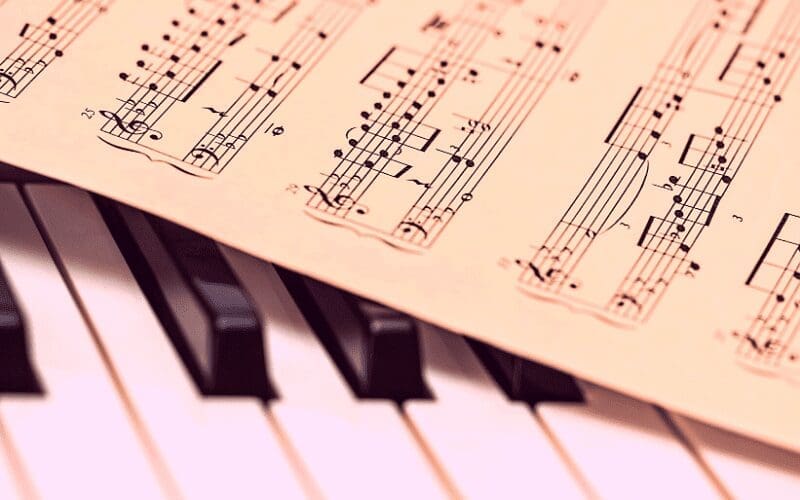
Music scales are groups of notes that sound harmonically pleasing together. Each scale has a certain number of notes.
Modes have been used in music for centuries, with origins dating back to ancient Greece. The most common modes used in Western music are the Ionian (major) and Aeolian (natural minor) modes, but there are also other modes such as Dorian, Phrygian, Lydian, Mixolydian, and Locrian. These modes have been used in various genres of music throughout history, including medieval and Renaissance music, folk music, and jazz.
Pentatonic scales have 5 notes, and major and minor scales have 7 notes.
An example of this would be the C major scale, where the notes are C, D, E, F, G, A, B.
If you write or play the same scale but change the starting point each time, you will be playing, or writing the different modes in music. For example:
C D E F G A B (Original C Major Scale)
D E F G A B C (Starting from the 2nd note of the scale ‘D’)
E F G A B C D (Starting from the 3rd note of the scale ‘E’)
F G A B C D E (Staring from the 4th note of the scale ‘F’)
G A B C D E F (Starting from the 5th note of the scale ‘G’)
A B C D E F G (Starting from the 6th note of the scale ‘A’)
B C D E F G A (Starting from the 7th note of the scale ‘B’)
So basically, we are not adding any new note to the C major scale. All we did was start at the same scale from different ascending positions.
Each starting point has 7 modes in a major scale.
The Pentatonic Scale
There are different names of each mode in the major scale which we will get into, but first, lets clarify this method of making modes from scales by using a pentatonic scale as an example:
A C D E G (A minor Pentatonic Scale)
C D E G A (Starting from the 2nd note of the scale ‘C’)
D E G A C (Starting from the 3rd note of the scale ‘D’)
E G A C D (Starting from the 4th note of the scale ‘E’)
G A C D E (Starting from the 5th note of the scale ‘G’)
Now that we know the modes music theory and how to make modes from any music scale. Let’s look at the modes in major scales with their names and functions.
If you’re a beginner, it would be helpful if you read our Music Scales 101 article. It will give you the base knowledge of how to make different major scales.
Different Modes In Music

Modes in the major scale are the most famous modes in music theory. All 7 modes have unique names and sounds.
In order to understand modes in the major scale, we first need to decide the parent scale from which these modes will be derived.
The following are the 7 modes in a major scale:
- Ionian
- Dorian
- Phrygian
- Lydian
- Mixolydian
- Aeolian
- Locrian
How To Apply Modes In Music
Now, let’s look at how to apply modes to your music.
Ionian
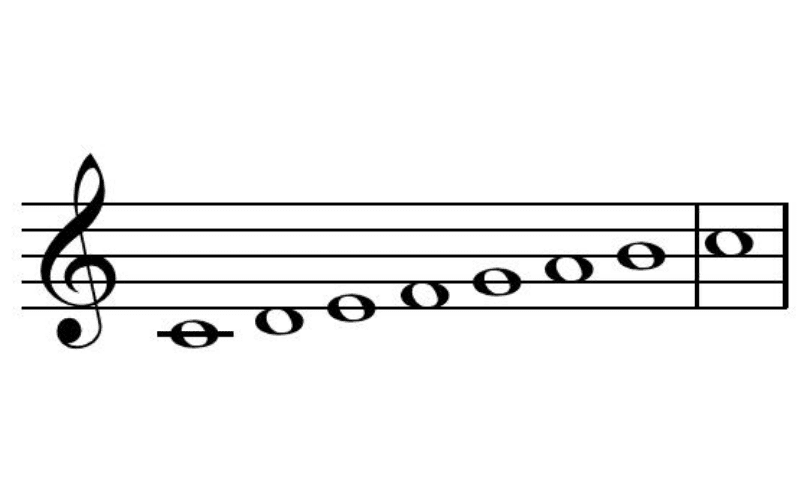
The first mode in any major scale. It sounds like the major scale being played in the ascending order from the root. In G major scale the G Ionian will be:
G A B C D E F#
1 2 3 4 5 6 7
The Ionian mode is used in the majority of pop music. Whenever there is a chord progression such as 1645 or 6415, this refers to the order of notes in Ionian mode.
Ed Sheeran’s Perfect is a great example of a song that uses 1645, and can be written in Ionian.
Dorian
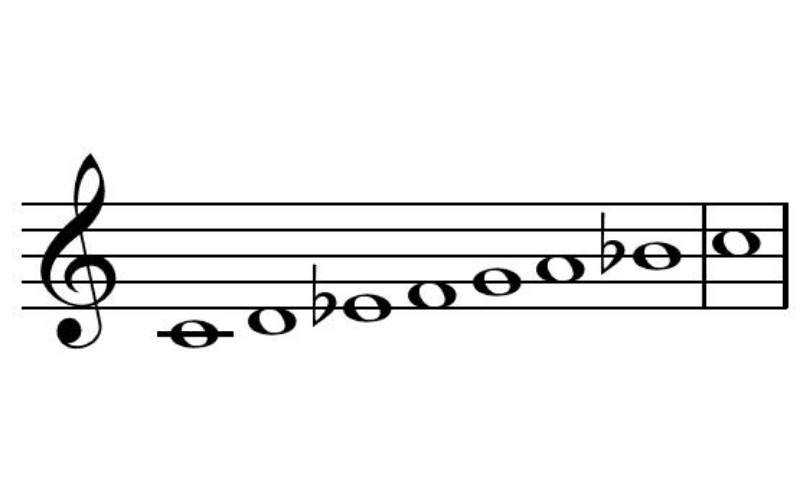
Dorian is the second mode of a major scale.
This means the scale of the major mode will have the same notes, but we will play it from the second note ascending instead of the first like Ionian.
In the G major scale, the second note is A – and therefore, A Dorian:
A B C D E F# G
2 3 4 5 6 7 8
The Dorian scale is famous for sounding medieval. So, if you are creating a song for a future film representing that era of history, using Dorian can get you in the zone fairly quickly than trying out all the other modes.
Phrygian
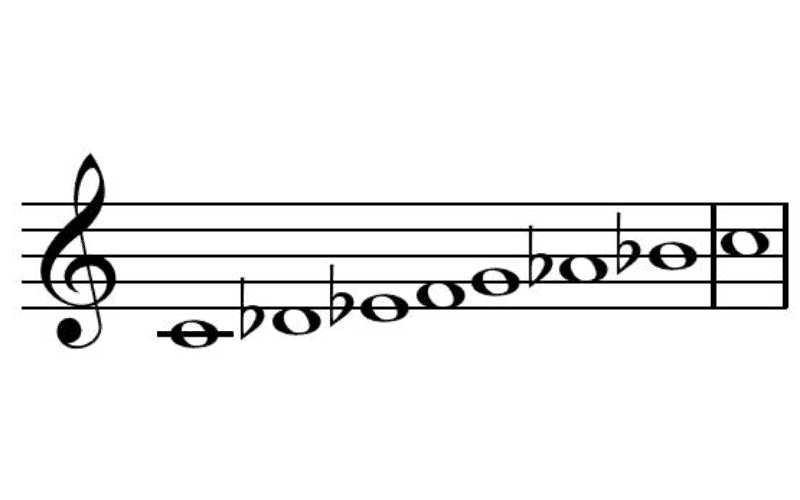
This is the third mode of a major scale.
This mode has a very distinctive sound and gets used a lot in portraying ‘middle eastern’ music.
The Phrygian mode is also known as the flat 2 scale. This is due to the second note being 1 semitone away from the first.
B C D E F# G A
3 4 5 6 7 8 9
Say, for example, you are working for a documentary about the Arabian deserts or a beatmaker trying to sound middle eastern, Phrygian mode can certainly provide the musical bed you would need to create that vibe.
Lydian
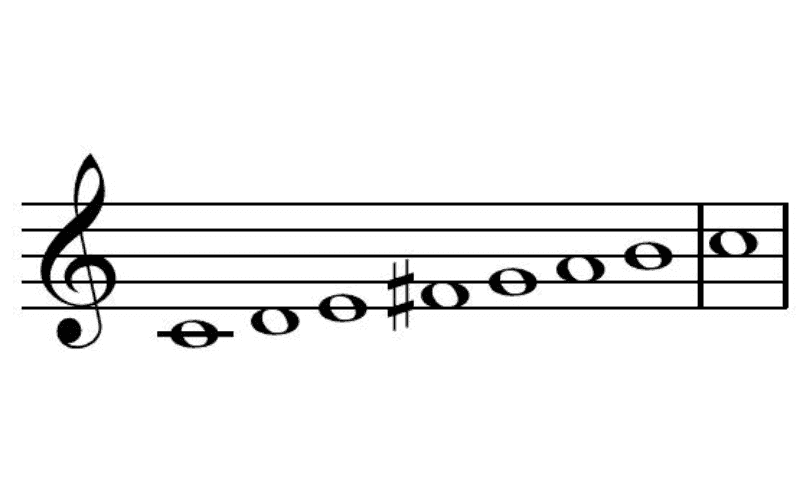
The 4th mode of a major scale is known as the Lydian mode.
The Lydian mode is also referred as #4 (sharp 4) scale. If you sharpen the 4th note of a major scale, it becomes a Lydian scale.
However, in modal terms, you can get to Lydian by playing the major scale starting from the 4th note.
C D E F# G A B
4 5 6 7 8 9 10
Lydian is also called Raag Yaman in Hindi Classical music.
The ideal way to approach this scale would be for songs which have microtonal movements, similar to how North Indian Classical music uses them.
Meditation and relaxation style music uses Lydian Mode as it sounds peaceful and calm – due to the #4 relationship.
Mixolydian

Do you like blues? If you do, this is the perfect mode for you.
Mixolydian is also known as the B7 scale, meaning if a major scale is played with flattening the 7th note, it will be called Mixolydian.
In terms of modes, it is the major scale played from the 5th note in an ascending order.
D E F# G A B C
5 6 7 8 9 10 11
The most common use of this mode is to play solos over 12 bar blues. This is incredibly important for improvisers in the genre of blues and jazz.
Furthermore, any Mixolydian mode can be played over dominant chords.
Aeolian
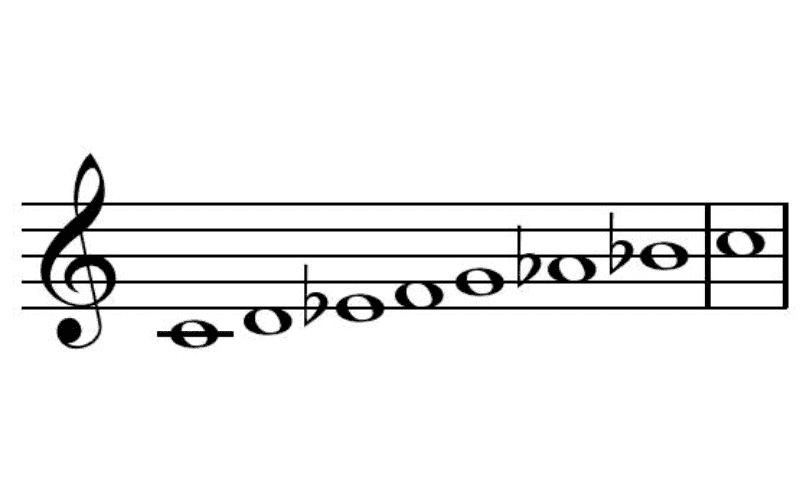
Similar to Ionian, Aeolian is another commonly used mode in songwriting.
This mode is referred to as the Natural minor scale. It is a major scale played from note number 6.
Another way to look at this mode is to use this formula on a major scale: B3, B6, B7
E F# G A B C D
6 7 8 9 10 11 12
A lot of trap music and EDM used natural minor or Aeolian due to its harmonic nature.
Many tracks in the classic rock genre also start from 6 of a major scale in order to give the minor feel to the song.
Locrian

This is the strangest sounding mode out of all of them.
This mode is used a lot in complex jazz standards. It is derived by playing the major scale from the 7th note in an ascending order.
This mode is particularly useful for music composers who are trying to find ‘new’ sounding melodies.
F# G A B C D E
7 8 9 10 11 12 13
As mentioned earlier, Locrian is useful in order to create abstract and original sounding melodies.
It is an interesting mode to create futuristic arpeggios on synthesisers.
There are various examples of composers rearranging basic nursery rhymes into Locrian, making them sound abstract and new.
Music Modes
Maybe you need a quick little video to help you further understand what modes in music are. Happy viewing!
Music Gateway & Music Distribution
Now you know your theory and you have laid down your track, you need people to hear it right? But how exactly do you do this and where would you even start? Well Music Gateway is here to help.
We are masters of music distribution and have plenty of experience to help you with every step of the process. Start distributing your music for free and keep up to 100% of your sales royalties.
We can help you release that power ballad to over 300 DSPs including Spotify, Apple Music and Amazon Music. You can eve use advance AI mastering to improve the sound of your tracks before you release. How cool is that?
“Music Gateway reflects the reality of today, movement, freshness and technology at the same time. I love it!” Pamela Pagoano, Label Manager
Modes In Music: Our Final Thoughts

To conclude, let’s summarise what we have discussed in this article.
Modes are referred to playing a scale ascending from different degrees.
In C major, the ascending order is C D E F G A B. This means if you play the same notes in order but start from D, you will have the second mode, which is known as Dorian mode.
You can do that from each note. By changing the starting point, the same major scale will sound different.
Furthermore, modes are musical secrets. Knowing them can certainly make your music theory understanding better, which will inevitably make your music and songwriting improve.
Try playing around with all these modes and see which one you like the most!
We hope you found this article helpful! Be sure to share this with your fellow musicians! Most importantly though, share across your socials and tag us @musicgateway! We love interacting with you all!










